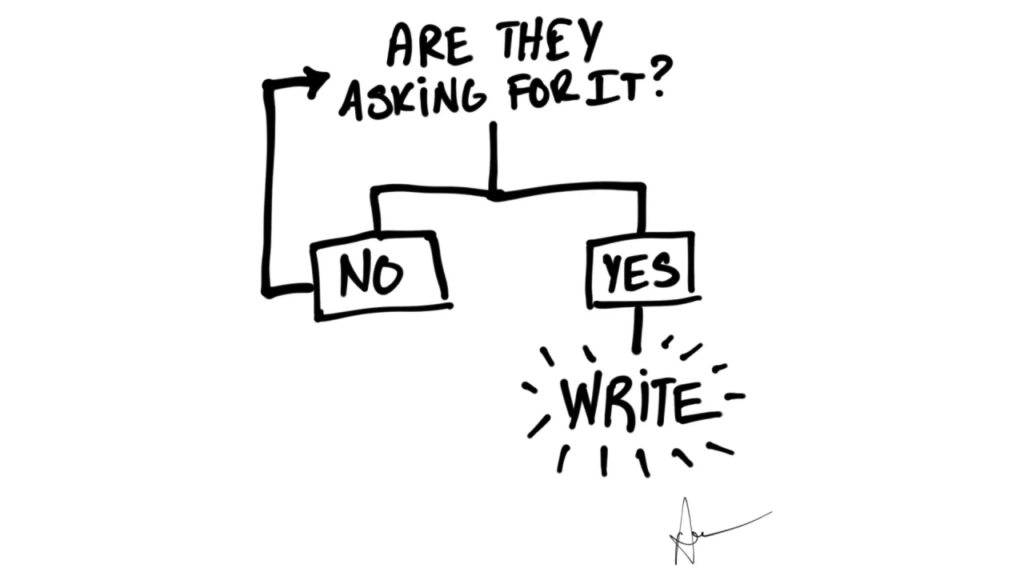From Keynote Speaker to Published Author
Earlier this week, Andrew Davis published an interesting confession about speaking and books.
(He published the first part on LinkedIn and encouraged those readers to subscribe to his newsletter for the rest — a smart strategy, though not the one I’m talking about today.)
Andrew is a speaker and author of multiple books, including The Referable Speaker: Your Guide to Building a Sustainable Speaking Career—No Fame Required, and a previous keynote speaker at the Content Entrepreneur Expo (CEX).
His reveal revolved around his earliest books, Brandscraping (2012) and Town Inc. (2015). He wished he had written the books after he created the keynote presentation on those subjects.
 Image courtesy of Andrew Davis
Image courtesy of Andrew Davis
“My recommendation is to take your most successful keynote – the one everyone is asking for – and break it down into those book chapters. Expand on the core ideas and turn it into a book,” Andrew writes.
I encourage you to read more of what Andrew had to say. But I also thought it would be a good time to revisit five things to do to start making speaking a marketing or revenue opportunity for your content business.
1. Identify your speaking purpose: Before you tackle anything else, pick two or three reasons why you want to add public speaking to your service list. What do you want speaking to do for your content business?
That purpose will help determine the proper call to action. If your primary goal is to earn revenue, you would focus on getting paid engagements regardless of the audience. However, if your big goal is to grow a subscriber base, you would focus on speaking at events with attendees similar to your target audience.
2. Research speaking engagements: Create a spreadsheet. Add columns for organization, website, social channels, contact, speaking-related events (if known), and speaking details. Start with events and gatherings you already attend or are familiar with. Ask your audience what events they attend. Search for your relevant keywords plus speaking-related words (event, conference, webinar, seminar, podcast, etc.)
With each entity, dig deeper to see if they provide any speaking-related information. Does that podcast have guests? Do they have webinars with speakers outside their organization? Do they have an established speaker submission process for their events?
Caveat: Learn about the target speaking engagement’s audience by subscribing to and consuming their content.
Highlight or rank the organizations you think would be the easiest to get a “yes” to your appearance (and they may not be the ones you are most eager to do).
3. Create the presentation: Now that you know your business purpose for speaking and potential opportunities, you can create a presentation that will deliver for you and the target audience.
I find having a go-to presentation works well. It makes it easier for your prospective hosts to easily understand what you offer. It also means you don’t have to spend the time to create a custom presentation for every gig.
Of course, not everyone may want that presentation. If your prospect has a different idea about what they want you to do, consider the request. If it’s a great fit for your priorities, it may be worth the time and energy (and revenue) to do it.
4. Pitch your presentation: Securing speaking engagements generally follows two paths – applying online through a speaker platform (often used for conferences with many presenters) and reaching out directly to the organization to pitch your appearance.
In the online application, most organizers want to know your presentation title, description, and learning outcomes (usually three to five). Spend some time to develop a catchy title that will attract reviewers’ attention and their customers’ interest at the event. Be clear and succinct in your description and learning outcomes.
In the direct pitch, use your creativity to entice the reviewer to consider your request. Focus on how the presentation will benefit them and their audience. Then explain why you are the person to do it.
5. Do the deal: Always have a written agreement between you and the event organizer – even if no money changes hands. It ensures everybody understands what will and will not be done or allowed. Among the elements in the speaking agreement:
- Event name, dates, location
- Speaking time, location
- Dress code
- Event speaking contact
- Equipment provided by the event and the presenter
- Usage rights (Is it a one-time presentation? Can the event record and republish it? If so, for how long?)
- Speaker guests (Can the speaker bring a guest for free or at a reduced rate?)
We encourage you to work with an attorney to set up a standard agreement that you can use for each engagement.
With the agreement signed, you’re ready to finalize your presentation. But don’t stop here. Think about how you can help organizers promote the event and/or your appearance. It helps them, and it helps boost your speaking profile so you can grow this service more quickly.
Ready to start your book adventure? Tilt Publishing is ready to help.The post From Keynote Speaker to Published Author appeared first on The Tilt Publishing.
